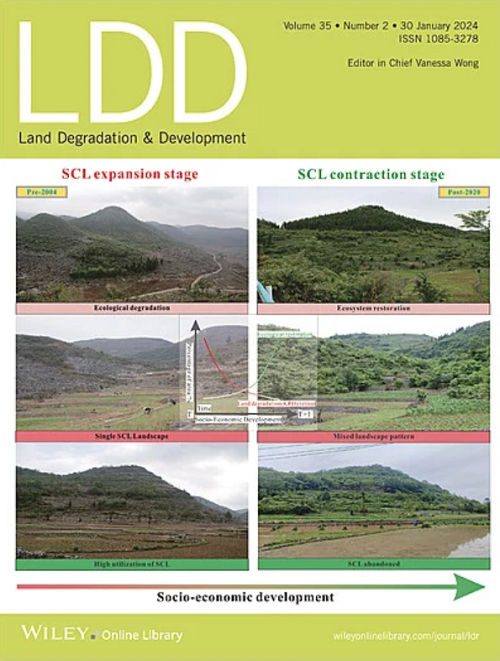生物多样性与岩石裸露率共同影响喀斯特常绿与落叶阔叶混交林生态系统的多功能性
IF 3.6
2区 农林科学
Q2 ENVIRONMENTAL SCIENCES
引用次数: 0
摘要
作为西南地区无人为干扰的喀斯特顶极群落,常绿落叶阔叶混交林生物多样性维持生态系统多功能性的机制尚不清楚。本研究采用结构方程模型分析了喀斯特森林土壤EMF与植物多样性、土壤微生物多样性和岩石暴露比三个关键变量的相关性。植物和土壤微生物多样性是电磁场的主要生物驱动因子。在这些生物因子中,与植物多样性相比,土壤微生物多样性提供了更好的解释EMF,真菌多样性和共发生网络复杂性起主导作用。植物的功能、物种和系统发育多样性指数比群落加权特征的平均值更能解释EMF的变化,这表明生态位互补假说在解释EMF的生物多样性维持机制方面具有更大的相关性。此外,岩石暴露比直接影响电磁场,也通过植物多样性间接影响电磁场。总体而言,土壤微生物多样性、植物多样性和岩石暴露比占EMF变异性的87%。具体而言,植物多样性、真菌多样性及其共现网络复杂性对EMF产生直接正向影响,而细菌多样性主要通过对真菌共现网络复杂性产生正向影响来影响EMF。这些发现强调了综合保护地上和地下生物多样性的重要性,并加强了我们对喀斯特森林EMF生物多样性维持机制的理解。本文章由计算机程序翻译,如有差异,请以英文原文为准。
Biodiversity and Rock Exposure Ratio Jointly Affected the Ecosystem Multifunctionality of Karst Evergreen and Deciduous Broad‐Leaved Mixed Forest
As the climax community of karst in southwest China without human disturbance, the mechanisms through which biodiversity maintains ecosystem multifunctionality (EMF) in evergreen and deciduous broad‐leaved mixed forest are still unclear. This study employed structural equation modeling to analyze the correlations between EMF and three key variables: plant diversity, soil microbial diversity, and rock exposure ratio within this karst forest. Plant and soil microbial diversity were the main biotic drivers of EMF. Within these biotic factors, soil microbial diversity provided a preferable explanation for EMF compared to plant diversity, with fungal diversity and the co‐occurrence network complexity playing dominant roles. Functional, species, and phylogenetic diversity indices of plant explain the changes in EMF better than the community‐weighted mean of traits, indicating that the niche complementarity hypothesis holds greater relevance in explaining the biodiversity‐maintenance mechanism of EMF. Moreover, the rock exposure ratio directly affects EMF as well as indirectly through plant diversity. Collectively, soil microbial diversity, plant diversity, and rock exposure ratio account for 87% of the variability in EMF. Specifically, plant diversity, fungal diversity, and its co‐occurrence network complexity exerted a positive and direct impact on EMF, while bacterial diversity mainly affected EMF by positively contributing to fungal co‐occurrence network complexity. These findings emphasized the significance of comprehensive protection of aboveground and underground biodiversity and have strengthened our comprehension of the biodiversity‐maintenance mechanisms of EMF in karst forests.
求助全文
通过发布文献求助,成功后即可免费获取论文全文。
去求助
来源期刊

Land Degradation & Development
农林科学-环境科学
CiteScore
7.70
自引率
8.50%
发文量
379
审稿时长
5.5 months
期刊介绍:
Land Degradation & Development is an international journal which seeks to promote rational study of the recognition, monitoring, control and rehabilitation of degradation in terrestrial environments. The journal focuses on:
- what land degradation is;
- what causes land degradation;
- the impacts of land degradation
- the scale of land degradation;
- the history, current status or future trends of land degradation;
- avoidance, mitigation and control of land degradation;
- remedial actions to rehabilitate or restore degraded land;
- sustainable land management.
 求助内容:
求助内容: 应助结果提醒方式:
应助结果提醒方式:


